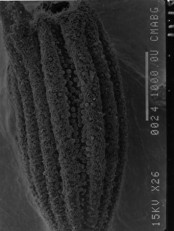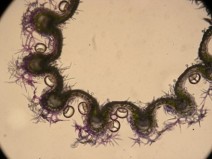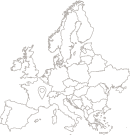Lavenders
Description
|
|
Lavenders are small bushes that grow naturally in dry or arid environments, often at altitude (up to 1800 m). They belong to the Lamiaceae family and the Lavandula L. genus, which includes around forty wild species, a few spontaneous hybrids and two species cultivated on a large scale for their essential oils. Their flowers and leaves are aromatic because they produce volatile compounds from the terpene family. Lavenders produce the volatile organic compounds (VOCs) that make up essential oils (EO) in peltate glands on the leaves and calyxes of the flowers. In lavenders, these glands are structures dedicated to the synthesis and storage of volatile terpenes. These compounds are extracted by distillation from mature inflorescences. | |
|
True lavender inflorescence |
|
|
|
Lavender calyx (scanning electron microscopy)→ |
Cross-section of a lavender calyx | |
At the laboratory
The LBVpam has been studying lavender on several scales since 2006, with different aims ↓
A very dynamic industry in France
Lavender and lavandin are the leading aromatic and medicinal perfume plants (APPs) grown in France. In 2023, there were more than 2,000 growers, covering more than 30,500 hectares, or more than half of France's acreage of aromatic and medicinal plants. In 2023, 90 t of true lavender EO and 1600 t of lavandin EO were produced. France is the world leader in lavandin EO production.
Competitiveness
The laboratory is carrying out research to gain a better understanding of the problems caused by pathogenes and to understand how wilting disease works and how it can be overcome in cultivated lavender.
Climate change issues
Research into the water stress tolerance of different varieties is helping to understand the plant's robustness and internal mechanisms in the face of drought. Lavender is also on the list of plants to plant for the bees that collect its nectar. The ecological study of lavender provides a better understanding of its interactions with pollinators.
|
|
|
|




 Université Jean Monnet
Université Jean Monnet